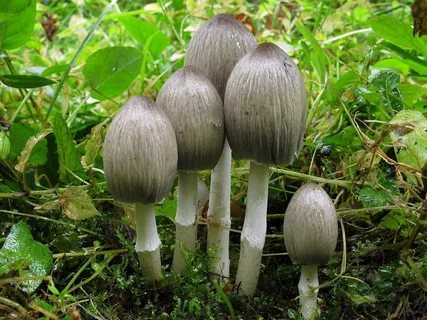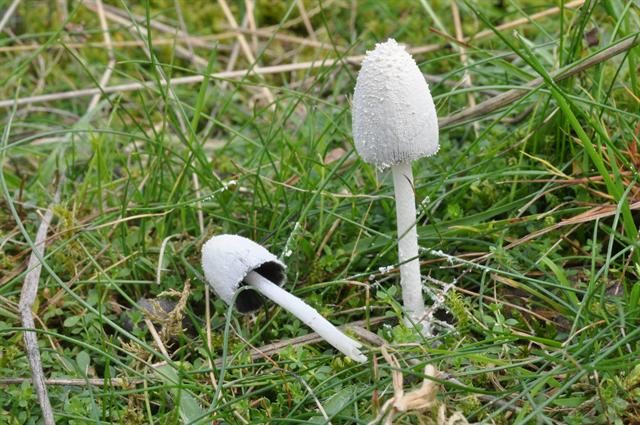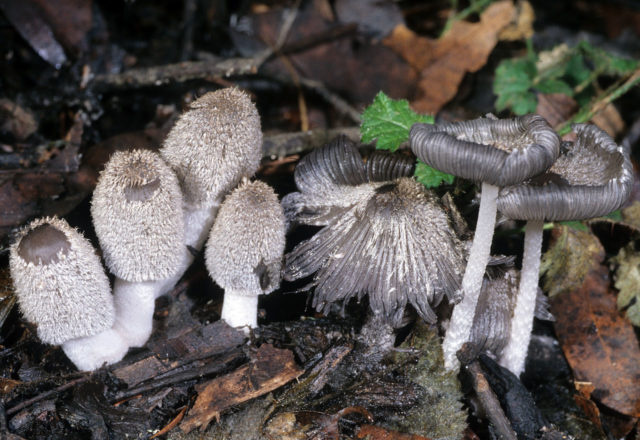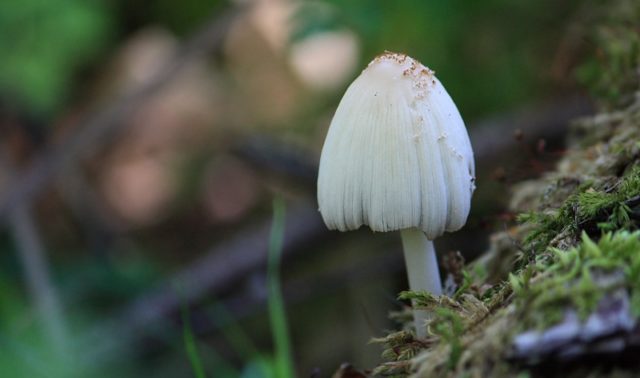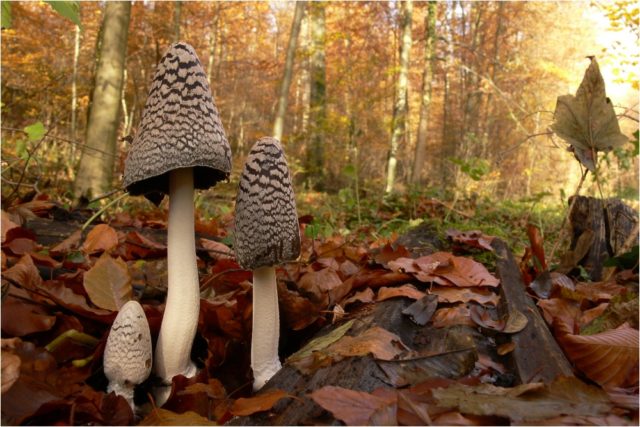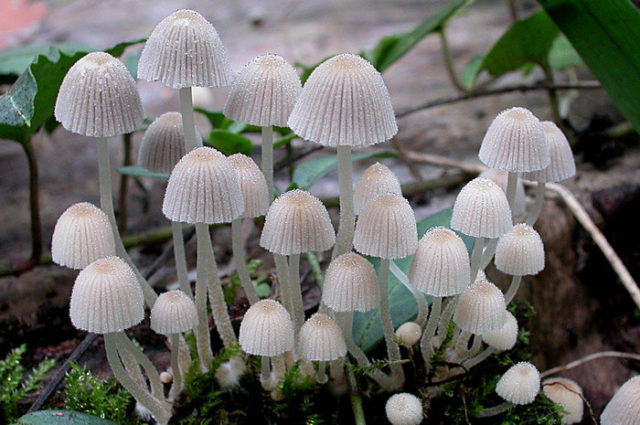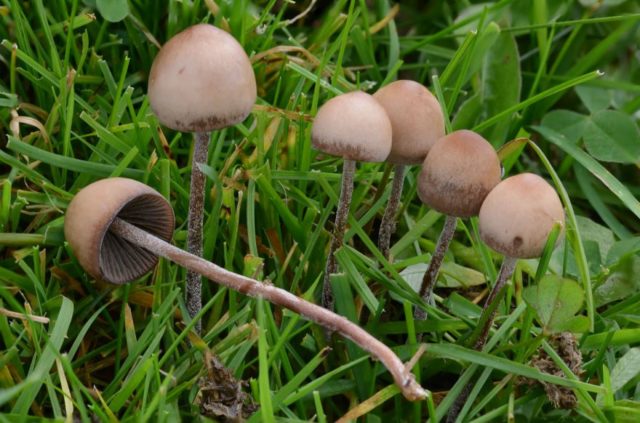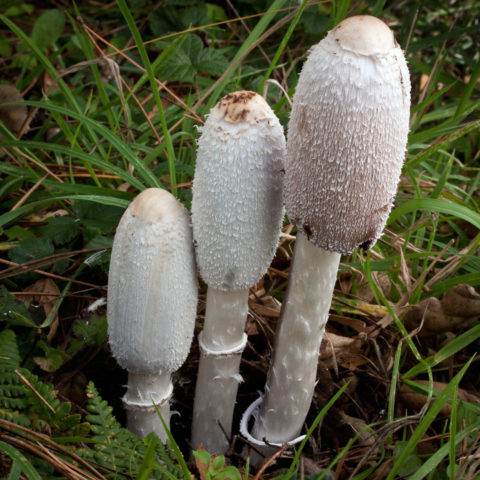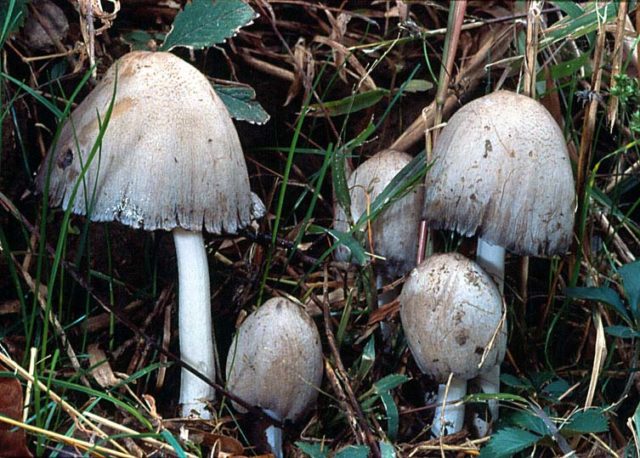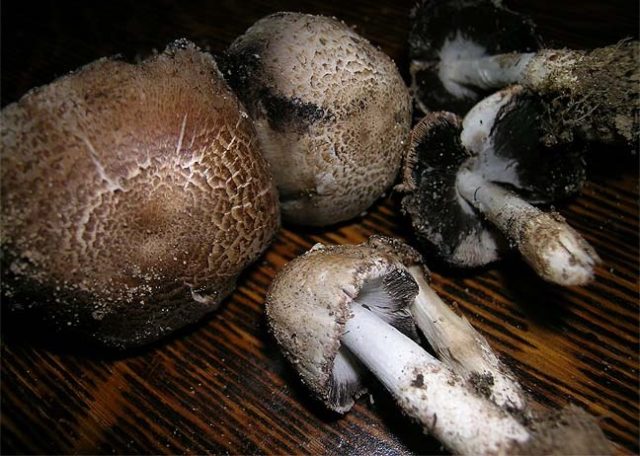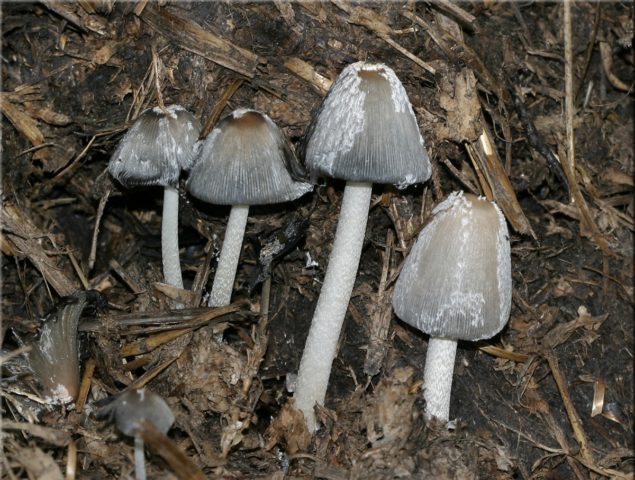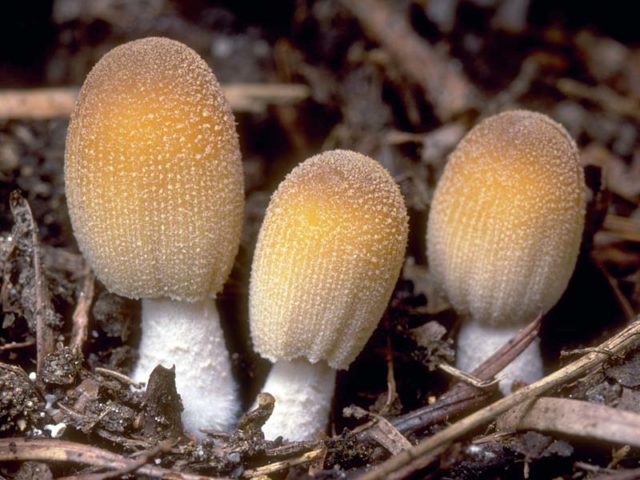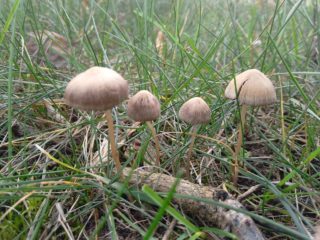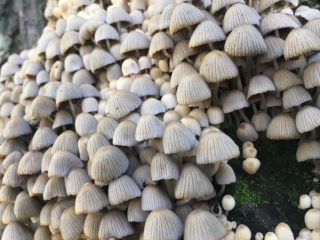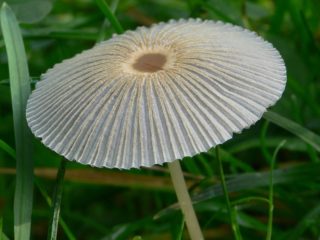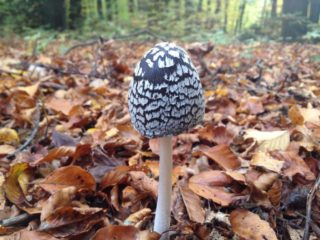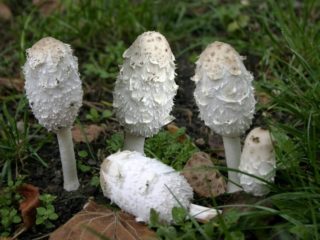Content
- 1 Where does the dung beetle mushroom grow
- 2 What does a dung beetle look like
- 3 Edible dung mushroom or not
- 4 Types of mushrooms dung beetles
- 5 Taste qualities of mushrooms
- 6 Benefits and harm to the body
- 7 Dung beetle mushroom from alcoholism
- 8 Rules for collecting dung beetles
- 9 How to cook dung mushroom
- 10 Conclusion
Detailed photos, description and preparation of the dung beetle mushroom will come in handy for those who decided to collect really edible fruits. After all, most of the species are toxic and unsuitable for food.
Where does the dung beetle mushroom grow
Dung beetles belong to the genus Dung, the Champignon family and are considered conditionally edible, but not all. The name, translated into Latin, sounds like Koprinus, which is why mushrooms are often called that way.
From the name it becomes clear that the fruit body grows in manure. But it turns out that you can meet him not only there. Dunghouses settle on rotting waste, waste sawdust and other organic waste. In spring and autumn, it can be seen in the garden, in the fields where the dung beetle grows in groups or separately. And there is a reasonable confirmation of this - dung beetles are classified as saprotrophs. This means that mycelium needs dead cells and decaying organics to grow.
On the territory of Russia, the mushroom can be found almost everywhere, it is not only in the Far North. It is especially common in the middle lane. Fruiting from early May to late October.
What does a dung beetle look like
You can recognize a dung beetle by its cap, which has a characteristic conical, convex shape or bell-like shape. For most representatives, it remains so throughout the entire stage of development. But there are mushrooms with a flat cap. Its upper part is covered with scales or flakes. The flesh of the cap is loose.
The stem of the mushroom is cylindrical, smooth, hollow inside. Its pulp is fibrous.
On the underside of the cap, you can see white plates, which darken when ripe. Spores are also black.
Edible dung mushroom or not
It is not for nothing that the dung is considered conditionally edible. It depends not only on belonging to a particular species, but also on the age of the fungus. You can only cook young fruits, because after ripening they also become toxic.
Special literature indicates that dung beetles belong to the fourth hazard class. Some types of caps are exclusively eaten until they reach maturity. But even dishes made from properly prepared dung beetles are in no way combined with alcohol. This is due to the fact that the fruiting body contains coprin, it does not allow alcohols to be absorbed, and causes severe poisoning. The most harmless thing that can happen from such a combination is digestive upset.
Types of mushrooms dung beetles
At the beginning of the twentieth century, the Dung family consisted of more than 50 species of mushrooms. But later, some of them were struck off the list. Today this family includes no more than 25 varieties. Of these, only a few can be prepared.
Poisonous mushrooms dung beetles
To recognize toxic dung beetles and not accidentally put them in the basket, you need to familiarize yourself with the photo and description of the fruit before going to the forest.
A striking representative of poisonous mushrooms is the snow-white dung beetle, it should not be confused with white. The cap is of a characteristic ovoid shape, very small, no more than 3 cm in diameter. After ripening, it takes the shape of a bell.The skin is pure white and densely covered with a powdery mildew-like bloom. When pressed, it can be easily erased. The plates on the underside are gray; as they ripen, they acquire a black tint. The leg is very thin, high, about 8 cm. A mealy bloom is present along the entire length.
The fungus is widespread in places of grazing, grows in manure or near it. Appears in mid-summer and continues to breed until autumn.
Among the poisonous mushrooms, fluffy dung beetle is also known. Outwardly, it looks like a spindle. The hat is up to 4 cm long, about 2 cm in diameter. However, only a young fruit looks like this, after two days the hat opens and takes the shape of a bell. The skin becomes dark olive, but its entire surface is covered with white flakes. From a distance it may seem that the hat is completely white. The leg of the fluffy dung beetle is thin and long, about 8 cm. The pulp is brittle, quickly collapses and becomes black.
You can meet this variety in old plantings, where there are many rotten trees. The representative feeds on decaying foliage. Can be found in places where manure is processed and stored. It grows actively in the summer-autumn period.
A domestic dunghill can be identified by a bell-shaped hat. In an adult mushroom, it takes the form of an umbrella. Diameter - no more than 5 cm. Dung beetle is painted in yellow-brown tones. The entire surface of the cap is covered with small white scales, more like dots. The flesh of the fruit is firm, light, odorless. The leg is long, white. On the underside, wide white plates are visible, which later turn black.
It is impossible to meet this representative in the forest, therefore it has such a name. It appears in old houses, where it is very damp, on rotten wood and stumps. Does not grow in open areas. Breeds only in summer, in autumn its number decreases.
A variegated or woodpecker dung is distinguished by an elongated egg-shaped cap up to 10 cm in diameter. The surface is dark, almost black in color, but completely covered with white spots. The pulp is light, smells bad and harsh, very fragile. The leg can grow up to 30 cm. The plates of young representatives are pink, after which they turn black.
The fungus is widespread in dry and shady forests, where there is a lot of rotting wood. Woodpecker dung grows well on fertile lands. Fruits appear from late August to November. They are referred to as hallucinogenic species.
The scattered dung beetle looks more like a jellyfish. The skin is velvety and has a pleasant cream color. There is no pulp, no smell either. The cap rests on a short thin stem, which becomes gray. The plates are convex, often black.
The species grows only in conditions of high humidity, if it is not, then it completely stops development until the mycelium disappears. You can meet them on stumps, they are almost completely covered with dung beetle. Appear from early spring to autumn. Edibility has not been established.
The hay dunghill has a bell-shaped hat, which is painted in a pleasant brown color. It rests on a thin wavy leg. The pulp is light. The plates are brown.
This variety prefers fertile but loose soil. Dung beetles grow in groups, often found on the lawn, in fields or meadows. They can be seen en masse not only in autumn, but also in summer, because under suitable conditions the mycelium does not stop growth. They do not eat it, since the fruits cause hallucinations, mental disorders, paranoia, and have a depressing effect on the central nervous system.
The folded dung is distinguished by a yellowish cap, which acquires a lighter shade with age. Mature plates are open, young ones - adherent to the stem, light. The mushroom resembles an umbrella. The surface of the cap is all in folds, the diameter is up to 3 cm. The leg is thin, medium-sized, fragile.
There is a representative along the roads, in meadows, in the steppes. The life cycle is short, bears fruit from May to October. The fruit is destroyed 12 hours after emergence.They do not eat it, it is almost impossible to find a mushroom.
Edible dung beetles
Among the edible dung beetles, there are very few mushrooms that can be fried, boiled and eaten. These include only two varieties:
- white;
- grey.
White dung beetle has a pleasant taste, but only when young. The fruit cannot be stored for a long time, it quickly collapses. Outwardly, it can be distinguished by its characteristic features. The cap is white, uneven, and covered with scales. At a young age, it looks more like a spindle, but later opens up. White plates are visible below. The stem of the mushroom is thin and high, up to 10 cm.
The distribution area is wide. Occurs along roads, in gardens, vegetable gardens, fields. It grows from spring to autumn.
Gray dung beetle has a sweet taste and is boiled before cooking. The cap of the mushroom is gray, covered with scales, rests on a short thin stem.
It is found everywhere from early spring to autumn. Grows in groups, can be found near compost heaps, in humid forests.
The rest of the varieties can be classified as conditionally edible dung beetles. They degrade quickly and should be eaten almost immediately after collection. These are dung beetles:
- Romagnesi;
- ordinary;
- shimmery.
The Romagnesi dung is distinguished by an umbrella-shaped hat with rounded edges. It is small, about 6 cm in diameter. The skin is beige, covered with scales. There is almost no pulp, most of it is white plates. The leg is of medium thickness, grayish.
The representative grows in groups, it is found in cool areas. It settles on rotting wood. It grows in parks, fields, and vegetable gardens. Bears abundantly in early spring and autumn. In summer it can only be found in the Northern regions. Prepare exclusively young hats with light plates.
The common dung beetle has a cap in the shape of an ellipse, it is completely furrowed, painted in a gray shade. The edges of the cap are wavy, torn. The pulp is odorless, the young plates are white. The leg is inclined, of medium size.
The mushroom grows singly on fertile soil. After rains, it can be found in landfills, forests, parks. Appears from spring to autumn. You need to cook as soon as possible, the fruits are not stored.
Shimmering manure looks beautiful, you can use it at a young age. Its ovoid cap is light brown in color, covered with fine grooves. Its edges are torn, wavy. The white pulp tastes sour, brittle, does not smell. The leg is thin, of medium length, brown below, but the main color is white. The plates are also brown at first, later turn black.
Shimmering dung beetles grow in heaps like mushrooms. They settle only on dry wood. You can meet them in parks, squares, dense forests. However, they do not grow on the remnants of coniferous trees, so they do not exist in pine forests. Fruiting from spring to late autumn.
Taste qualities of mushrooms
Freshly cooked dung beetle mushrooms do not have a pronounced taste. Some types are good pickled, they become sweet. They are often used in simple recipes.
Benefits and harm to the body
The edible dung mushroom, properly harvested and cooked, is of great benefit to the body. It contains:
- cellulose;
- B vitamins;
- amino acids;
- trace elements.
They are recommended for diabetics to eat, since these mushrooms have a hypoglycemic effect. In folk medicine, they are used to treat prostate diseases, increase immunity. Dung beetle is used to prepare ointments for malignant dermatitis and ulcers. The water infusion is recommended for improving digestion and as an expectorant.
However, even edible species can be harmful if collected in the wrong place and stored improperly. They cause poisoning, as they absorb salts of heavy metals and all harmful substances from the soil on which they grew.
Dung beetle mushroom from alcoholism
As already mentioned, the dung beetle mushroom is incompatible with alcoholic beverages, therefore it is popularly used to treat alcoholism. According to reviews, a daily intake of a small amount of a forest product causes a persistent aversion to alcohol. This was noticed by pharmaceutical companies, which began to produce tablets for the treatment of binge drinking on the basis of coprinus.
However, not all types of dung beetle can be used for treatment. Only gray and shimmery is suitable.
Rules for collecting dung beetles
Even edible dung beetles can cause undesirable consequences, so they need to be harvested young. In a mature mushroom, the cap unfolds, which indicates its age. You do not need to touch them. Only dense, clean and light fruits are cut off.
It is worth considering the place where dung beetles grow. It doesn't matter if they are eaten or used for medicinal purposes, preference should be given to forest fruits that grow in grass or wood. It is better to refuse collection in:
- dung heaps;
- compost pit;
- city dumps;
- a place of grazing;
- by the roads.
How to cook dung mushroom
You need to cook dung beetles in the first 2 hours after harvesting, otherwise they will turn into mucus. Use only quick processing, after cleaning the leg and removing the film from the cap. Before cooking, the fruits are sorted out, all suspicious ones or with pink plates are thrown away.
Dung beetle mushrooms are usually fried, boiled and pickled. There are several simple recipes for cooking:
- Stewed in sour cream... To do this, the mushrooms are boiled in salted water for 30 minutes. After that, stew in sour cream over low heat, seasoned with pepper. At the end, you can add fried onions and greens.
- Omelet with cheese... To do this, dung beetles need to be fried until golden brown, pour over the egg-milk mixture, fry for another 10 minutes. At the end of cooking, sprinkle the omelet with grated cheese.
- Noodle soup... Boil the mushrooms for 30 minutes. Then fry with carrots and onions in butter. Put potatoes in the broth, fry and cook for 10 minutes, then add the noodles. Cook until tender, sprinkle with herbs.
It should be borne in mind that it is impossible to cook dung beetles with other mushrooms, therefore they choose recipes with one type.
Conclusion
A photo, description and preparation of a dung beetle mushroom will help those who decide to taste the rare fruit. To avoid poisoning, you need to follow all the recommendations for collection and storage, and throw away suspicious specimens. It is better to use dung beetle for traditional medicine after consulting a doctor.
